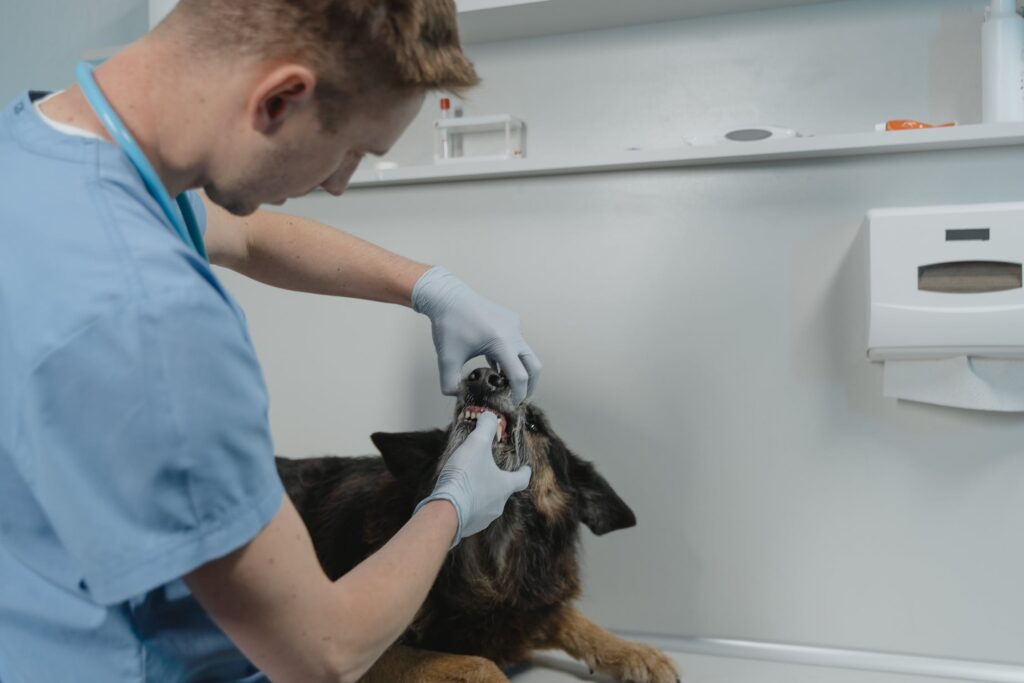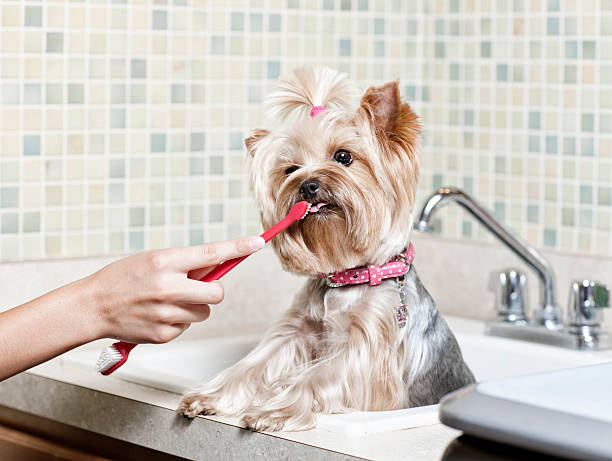Caring for your small dog’s teeth is important for their overall health and well-being. Proper dental care can help prevent a range of issues, including tooth decay, gum disease, and bad breath. In this article, we’ll provide you with some tips and best practices for keeping your small dog’s teeth clean and healthy.
1.Brush your small dog’s teeth regularly.
Small dog teeth cleaning is the most effective way to prevent dental problems. Use a soft-bristled toothbrush specifically designed for dogs, or a finger brush that fits over your finger. You can also use a child’s toothbrush, as long as it has soft bristles.
To brush your small dog’s teeth, place a small amount of toothpaste on the toothbrush and gently brush the fronts, backs, and tops of your dog’s teeth. Be sure to reach the back teeth, where tartar and plaque tend to build up. Avoid using human toothpaste, as it can be harmful to your dog if swallowed. Besides this, use a toothpaste specifically made for dogs.
2.Provide your small dog with chew toys and treats.
Chew toys and treats can help clean your small dog’s teeth and promote healthy chewing habits. Look for toys and treats that are specifically designed to clean teeth and massage gums. These can be especially helpful for dogs who are resistant to toothbrushing.
3.Feed your small dog a high-quality diet.
A high-quality diet can help keep your small dog’s teeth healthy. Choose a diet that is appropriate for your dog’s size and age, and that includes the necessary nutrients to support healthy teeth and gums. Avoid feeding your small dog a diet that is high in sugar and starch, as these can contribute to tooth decay.
4.Check your small dog’s teeth regularly.
Regularly check your small dog’s teeth for any signs of dental problems. Some common signs of dental issues in dogs include bad breath, yellow or brown tartar buildup on the teeth, red or swollen gums, and difficulty eating or chewing. If you notice any of these signs, contact your veterinarian for further evaluation and treatment.
5.Get your small dog’s teeth cleaned professionally.
Even with regular brushing and other dental care at home, it is still important to have your small dog’s teeth cleaned professionally by a veterinarian. This is because professional cleanings allow your veterinarian to thoroughly clean your dog’s teeth, removing plaque and tartar that cannot be removed with a toothbrush alone. Professional cleanings also allow your veterinarian to detect any dental problems early on and provide the necessary treatment.
6.Consider feeding your small dog a dental-specific diet.
There are a variety of dental-specific diets available that can help keep your small dog’s teeth clean and healthy. These diets are designed to help reduce plaque and tartar buildup, and they may be recommended by your veterinarian if your small dog is prone to dental problems.
Also Read: Dog Sprinkler and How Can You Make Your Pet Enjoy Outdoors?

Also Read: Dog Food For Pregnant Dogs: What To Feed A Pregnant Dog
The Pomeranian Dog Is A Small Breed Of Pinscher Dogs
Crocs for Dogs Comes to the Rescue
How To Brush Your Little Dog’s Teeth
However, many people are unsure of how to properly brush their little dog’s teeth, so we’ve put together this guide to help you get started.
Step 1: Gather the necessary supplies
Before you begin, you’ll need to gather a few supplies to make the process easier. These include:
- A toothbrush specifically designed for dogs: These brushes have softer bristles and are smaller in size, making them easier to use on your little dog’s teeth.
- Toothpaste made specifically for dogs: Do not use toothpaste made for humans, as it can be harmful to your dog if ingested. Instead, purchase toothpaste made specifically for dogs, which comes in a variety of flavors like chicken and beef to make it more appealing to them.
- A finger brush or dental wipe: These are alternative options to a toothbrush that can be easier to use on smaller dogs. A finger brush fits over your finger and has soft bristles on the end, while a dental wipe is a cloth-like material that you can use to wipe your dog’s teeth.
Step 2: Get your dog used to the process
Before you start brushing your little dog’s teeth, it’s important to get them used to the process. Start by letting them sniff and lick the toothpaste and brush so they become familiar with the smell and taste. You can also allow them to play with the brush and toothpaste as a toy to get them used to the feeling.
Step 3: Start slowly
Once your little dog is comfortable with the toothpaste and brush, it’s time to start brushing their teeth. Begin by lifting their lips and gently brushing their front teeth, using a circular motion. Be sure to brush the outer surfaces of their teeth as well as the inner surfaces. If your little dog is resistant to having their teeth brushed, take breaks and reward them with treats and praise to encourage them to continue.
Step 4: Don’t forget the back teeth
It’s easy to focus on the front teeth when brushing, but it’s important not to forget the back teeth. These teeth can be harder to reach, but they’re just as important to clean. To brush the back teeth, gently lift your little dog’s lips and brush in a circular motion using a back and forth motion.

Step 5: Use a dental wipe or finger brush
If your little dog is still resistant to having their teeth brushed, you can try using a dental wipe or finger brush instead. A dental wipe is a cloth-like material that you can use to wipe your dog’s teeth, while a finger brush fits over your finger and has soft bristles on the end. Both options can be easier to use on smaller dogs and may be more comfortable for them.
Step 6: Don’t forget the tongue
While brushing the teeth is important, don’t forget to brush your little dog’s tongue as well. The tongue can harbor bacteria and cause bad breath, so it’s important to clean it regularly. To brush the tongue, gently lift it and brush it in a circular motion using a back and forth motion.
Step 7: Keep up with regular brushing
To keep your little dog’s teeth clean and healthy, it’s important to brush them regularly. Try to brush dogs teeth at least once a week, but you can do once per day.
In conclusion, caring for your small dog’s teeth is an important part of their overall health and well-being. By following the tips outlined above, you can help prevent dental problems and keep your small pets teeth clean and healthy.



